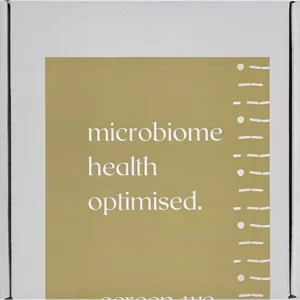What is Prevotella bacteria?
Prevotella species are a bacterial species present in the vaginal, seminal, gut microbiomes.
These are gram-negative bacteria – which means they has strong cells walls and can therefore be difficult to treat even with antibiotics[1].
When can Prevotella be useful?
Prevotella species are great for breaking down fibre and plant compounds in the gut[2].
However, when found outside of the gut, this is when it can be a cause for concern.
Why can it be an issue?
Prevotella species are often associated with BV[3]. With BV being the most common vaginal condition affecting 30% of reproductive-aged women[4]; so, this is no small issue! This is thought to be because Prevotella species provide nutrients that promote the growth of other BV-associated species such as Gardnerella vaginalis.
The link between Prevotella species and BV is a strong one – for example, in one study Prevotella timonensiswas found in 76% of women with BV, but only 9% of healthy women[5].
BV is not just uncomfortable, but indicates a vaginal microbiome that is out of balance (something that is called, vaginal dysbiosis). This has a whole range of further health implications such as – higher risk of other infections (such as STIs, UTIs, HPV) and disease, fertility complications, and much more. For more information on this then head over to our Vaginal Health Clinic.
How can I tell if I have Prevotella species present?
Prevotella species have been detected in 68% of women who showed no symptoms[6]. Therefore, testing is important. This is also why determining the relative amount (percentage) of Prevotella species is important – as not everyone with these species present necessarily have BV.
ScreenMe’s NGS testing will not just tell you if you have Prevotella spp. present. But will also tell you the relative amount (percentage) of each species present. This will allow you to understand whether Prevotella spp. are dominating your microbiome, or whether they are less prominent and therefore less likely to be causing negative health implications.
How can you get rid of Prevotella spp. in your vaginal microbiome?
Often if you have BV you will be prescribed antibiotics.
However, if this is something you are experiencing recurrently, then we would really recommend improving and rebalancing your vaginal microbiome.
This is not the same for everyone, as depends on your individual microbiome composition, which is why we would recommend a ScreenMe test, which screens 100% of the bacteria present in your microbiome, including the percentages of each bacteria species present (including any Prevotella spp.). This also includes a free 1:1 consultation with an intimate health practitioner – who talks you through your results, and helps you to create a bespoke plan of action that fits your results, life and goals!
To learn more about how to optimise and improve your intimate health then check out our free, online Vaginal Health Clinic!
[1] https://www.ncbi.nlm.nih.gov/books/NBK538213/
[2] https://zoe.com/learn/what-is-prevotella-copri.amp?utm_source=google_pmax&utm_medium=&utm_campaign=20382344316&utm_adgroup=&utm_term=&utm_content=&gclid=CjwKCAiA_tuuBhAUEiwAvxkgTgf0oAmszanc_c-_UcntNf1fX37AcK3jJGFdkEZf150rCPGmEJLr6hoCPo4QAvD_BwE
[3] https://www.frontiersin.org/articles/10.3389/fcimb.2023.1198113/full
[4] https://academic.oup.com/jid/article/228/5/646/7222009
[5] https://www.sciencedirect.com/topics/immunology-and-microbiology/prevotella
[6] https://www.sciencedirect.com/topics/immunology-and-microbiology/prevotella



